Students dig into police data to pinpoint nuisance properties near University of Akron
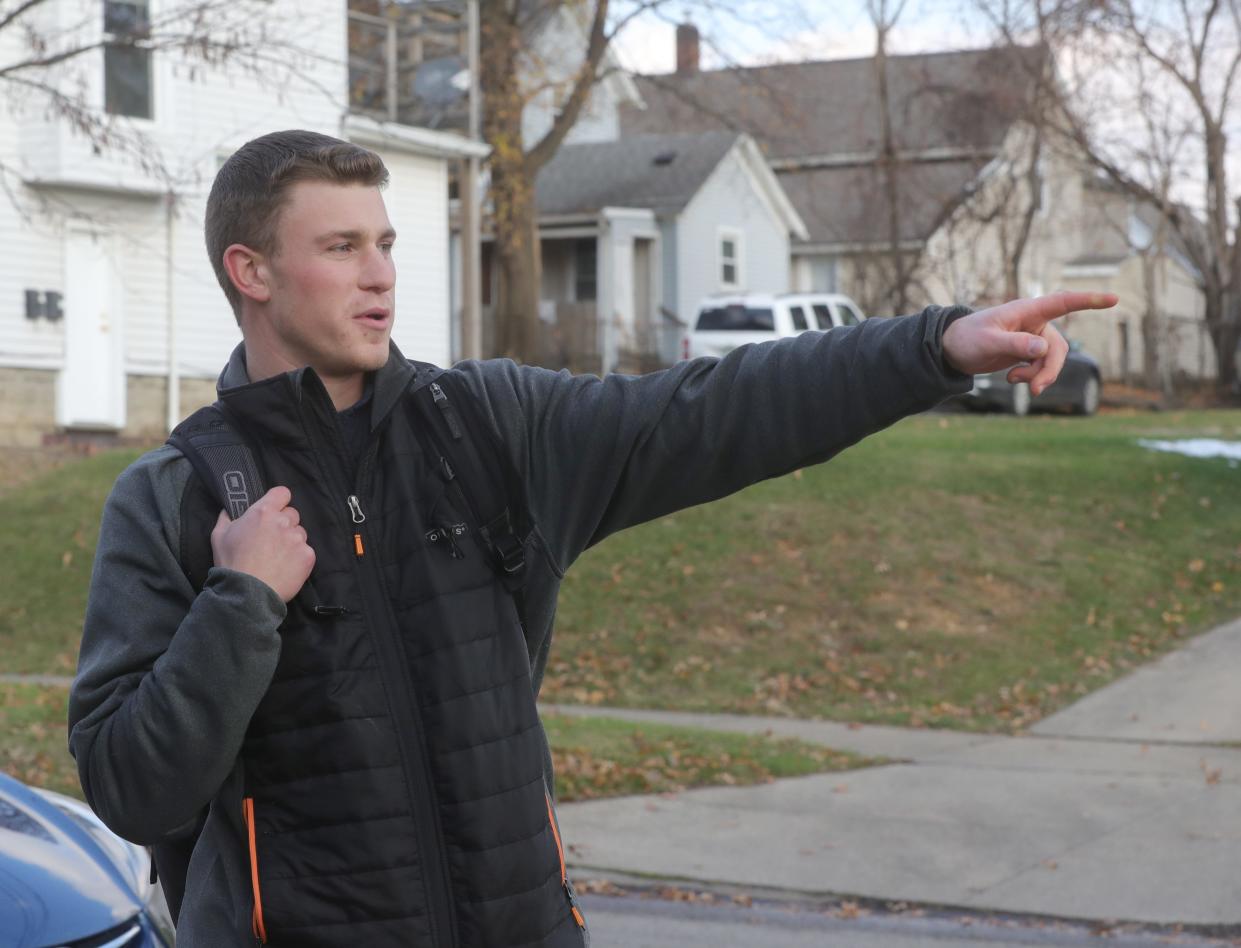
University of Akron Junior Matthew Koss returned to his off-campus apartment as classes resumed in August, eager to reconnect with friends that weekend at a house party next door.
“It was a frat party,” said the 21-year-old mechanical engineering major, who’s lived off-campus for two years. “They probably had 100 people over. First weekend back to school. Everybody is all excited to go to the party, to go out with your friends. I mean, you miss them all summer.”
“Somebody pulls out a gun at the party,” Koss recalled. “After we left, they fired six shots in the air. That’s right next to my house. It’s kind of unnerving.”
In the 17 months before this shooting, Akron police recorded 1,655 gun crimes citywide, including more than 50 in the University Park neighborhood that includes campus and the mix of student housing and residential homes immediately south of East Exchange Street.
Discharged weapons account for more than half of all recorded gun crimes. The most heinous crimes claimed nearly 90 lives, including two people who died in September when house parties on Kling Street erupted into violence. A fight broke out and unknown suspects shots into a crowd, killing two people and injuring another.
The common refrain, according to people who live in the neighborhood, is that gun violence is attracted to unruly house parties with uninvited guests. Some of these houses, though, attract police attention long before anyone pulls out a gun.
And Stephanie Yuhas, an associate professor of criminal justice at UA and a former magistrate in the Akron Municipal Court, wants to help police find them before it’s too late.
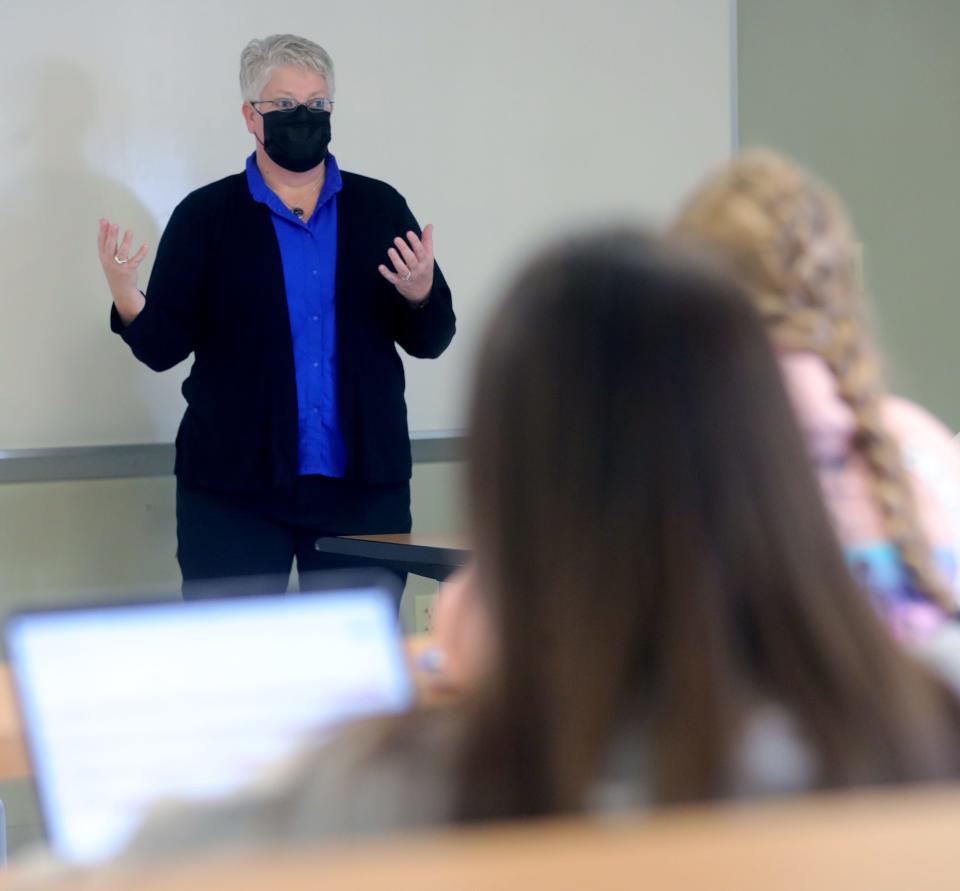
Criminal nuisance project
A handful of students studying criminal intelligence analysis have already signed up for an independent class Yuhas is offering in January. Their work — examining 2020 crime data to help police better understand and respond to crime patterns — could make Akron safer.
Yuhas is focusing her juniors and seniors on helping Akron prosecutors and police enforce the city's criminal nuisance law. Police can crack down on problem properties by pressuring the owners with fines and more.
“Typically, we rely on the police department to do that, but they don’t really use this mechanism that often,” said Yuhas. "So, in conjunction with University of Akron Police Department and APD, what we’re hoping to do is identify those properties, compile the information needed to pursue that criminal nuisance action and then basically hand it over on a silver platter to APD so they can follow through.
"Whether or not they do, that’s going to be entirely up to them.”
Akron Police Capt. Michael Yohe told the Beacon Journal last month that police typically get involved when citizens complain or properties generate multiple calls for service.
Zone commanders then assign Neighborhood Response Team officers who aren't running from call to call. The officers take time to talk to neighbors and landlords. Most issues are resolved issues with mediation or education, Yohe said.
Needed in every neighborhood
With thousands of gun and other crimes reported yearly, the Akron police department has mailed criminal nuisance letters an average of 28 times annually since 2006. The enforcement fluctuates from as little as four to more than 50 or 60 letters a year.
Yuhas said her goal, like other security efforts spurred by the fatal off-campus shooting in September, is to create a program that’s scalable across the city.
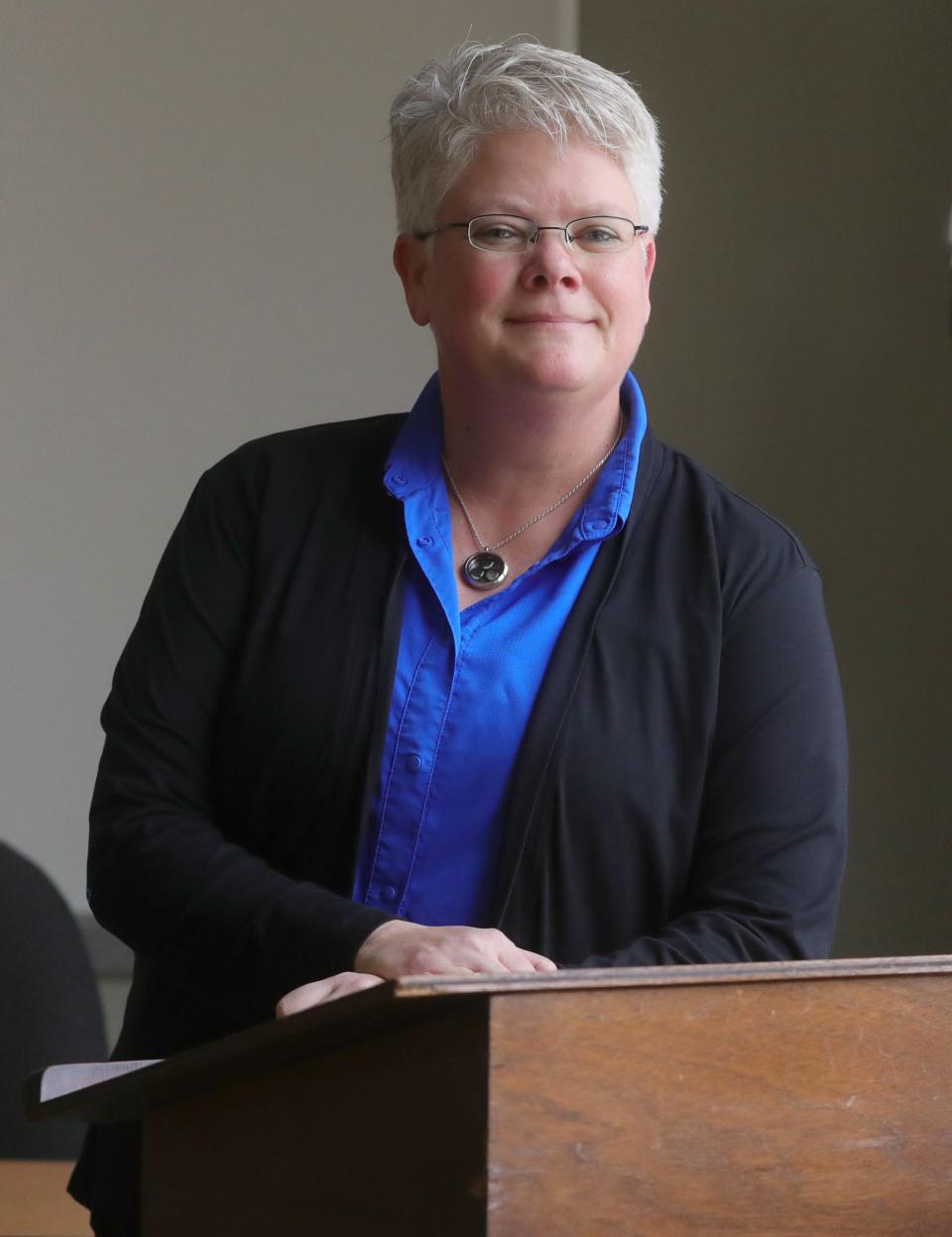
“The same thing needs to be done in every neighborhood in Akron,” she said. “It’s a quality-of-life issue in every neighborhood where there’s a certain amount of criminal activity on properties. That affects everybody. The way the law is written, it’s more than three police calls to a property within six months, which in some neighborhoods would be every property on the street, practically.”
Yuhas added that the data are only as good as the reporting. If police do not charge someone or file a criminal report, a simple call for service isn't available for the students to make their determinations.
Problem areas
The fatal September shooting remains unsolved. Police also could not say Wednesday that any arrests have been made in that August incident when someone fired six rounds into the night air over Allyn Street.
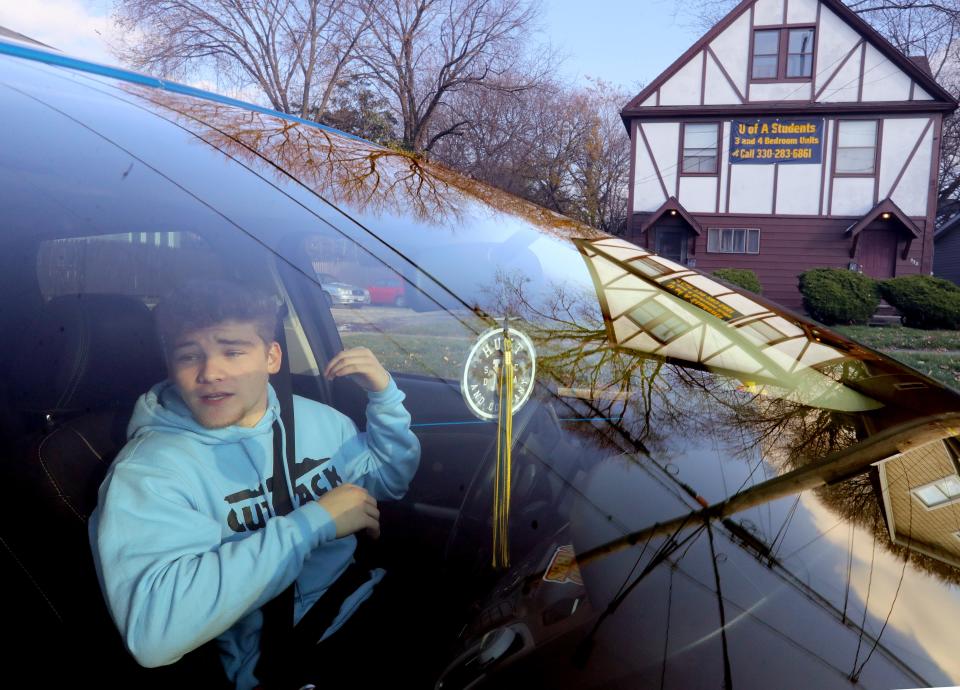
“I was asleep,” said Chris Pongracz, a criminology major who also on Allyn Street. “It was like 2:30 a.m. I woke up the next morning and I came over. There was a hole in our fence. Someone got tackled through that fence. There was a fight and then it broke out.”
“That’s not good,” he said. “A week of us living here on our own for the first time and there’s a shooting. It’s kind of scary. It is.”
Pongracz said his neighbors haven't had a party since.
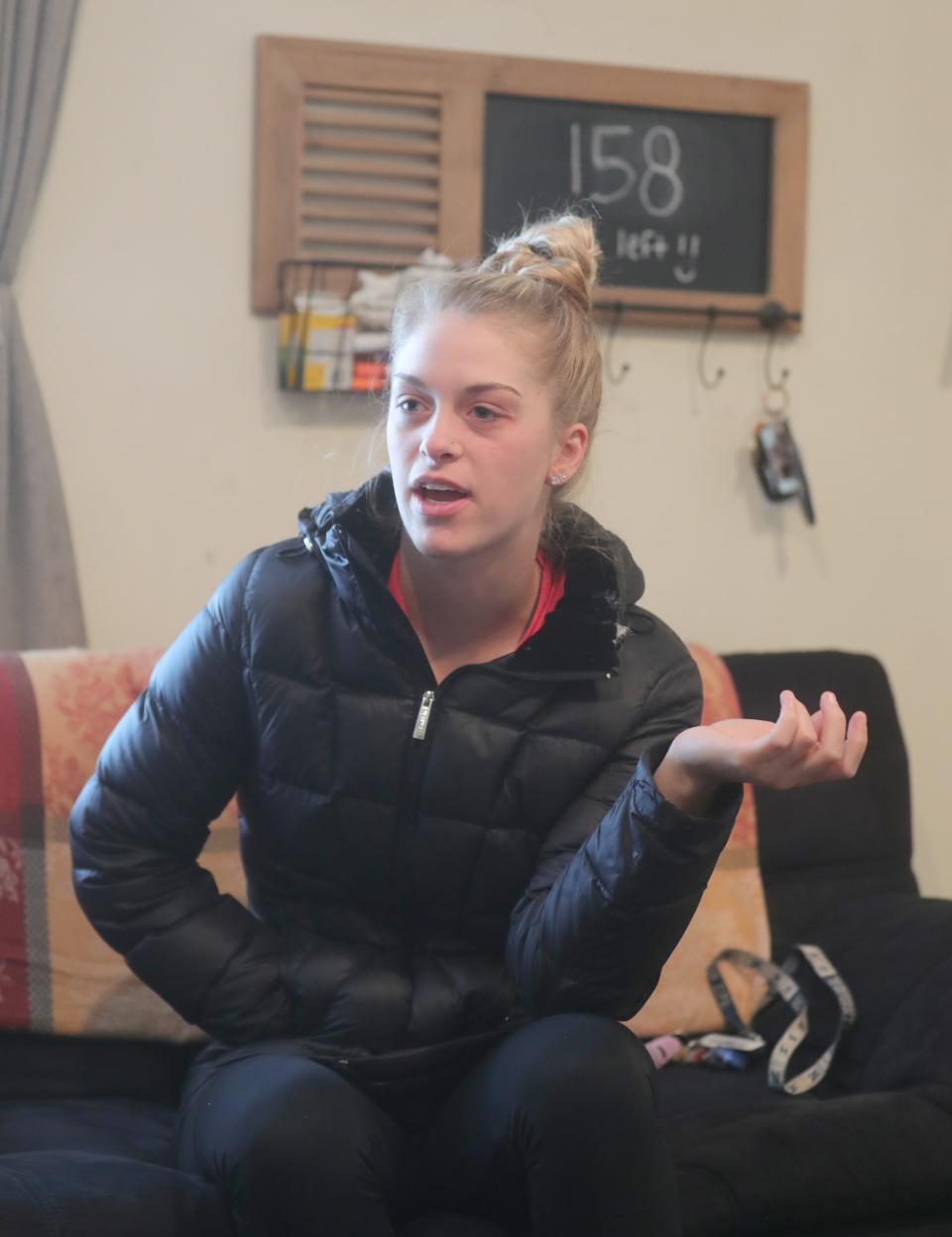
Residents who live in this mix of student apartments and residential homes say they generally feel safe during the day.
"I feel like most problems occur on the outskirts of the university," Eiljah Chase, 22. The theatrical studies major recently graduated from Kent State and moved to the southernmost edge of University Park, on the other side of I-76. "For the most part I've been fine."
"I understand people's experiences of being 'traumatized' with experiences in the area," said Chase, who's "had no problems" so far.
It's mostly large gatherings at night in warmer weather that attract trouble, residents said. Some more serious problems seem to have an address book.
“I mean, I think every once in a while you might get an outlier where it could be a random occurrence," Koss, the junior, said of crime. "But it’s usually the same area, the same houses, the same crowd.”
"When stuff gets crazy on the weekends and there’s parties, people are coming in and out of the city, you don’t really know who’s there and who’s around you," he said. "You just have to be vigilant and aware of your surroundings."
Students who said they attended Halloween parties said hosts checked university IDs at the door. Traveling together helps, the students said.
They also want more police patrols. Even after the fatal shooting, some said officers just drove by obvious noise and crowd issues.
"I don’t see too many law enforcement people," said Pongracz. "I’ll see a cop or two drive up and down the street. But they don’t do anything."
In a partnership that officials say began before the fatal shooting, UA and the city of Akron (using federal stimulus dollars) have each committed $1 million to install 50 more surveillance cameras in the area. And UA President Gary Miller announced more police officers.
Landlords get involved
A review of data on nuisance complaint letters, which includes where police mailed them to, shows that its rental properties and, in particular, out-of-town landlords who attract the most violations.
Of the 419 times since 2006 that Akron police have issued criminal nuisance letters, 310 involved rentals. Of these, only a quarter are owned by Akron landlords. About 37% have mailing addresses outside Akron but within Summit County. The rest operate from outside the county, including 31 (or 10% of all rentals that received a criminal nuisance letter) with non-Ohio addresses.
Some landlords want more criminal enforcement, especially on minor issues that can spin out of control.
“We’re really heavily involved with houses that need to be taken care of and security on campus,” said a landlord with campus rentals posted on a bulletin board outside Yuhas' class.
The landlord spoke on the condition of anonymity to share details of regular meetings he and other landlords have had since the fatal shooting with UA's Miller and Kerry Jackson, a 13-year veteran of the campus police department who was named director the office of off-campus security — a position created after the shooting.
The landlords want better lighting, and police walking the beat to protect lives and livelihoods.
“It involves our business, our students,” the landlord said. “We want to make sure they’re safe.”
Landlords also argue that not all requests for help are taken seriously.
"I have called and know of other landlords who have called about parking disputes — only to be 'blown off'," said a landlord who emailed comments to the Beacon Journal after the September shooting but could not be reached for further comment.
"I know of a recent non-fatal shooting near one of my properties that began with a verbal altercation," he wrote. "I know the police were called, however, the response was along the lines 'we can't do anything about this'. Unfortunately, it escalated to a shooting."
"If I need to evict tenants, I will," he continued. "However, when I go to court I need more than my belief they are partying too much. I need police documentation."
Reach Doug Livingston at dlivingston@thebeaconjournal.com or 330-996-3792.
This article originally appeared on Akron Beacon Journal: UA students to help Akron police enforce criminal nuisance law


